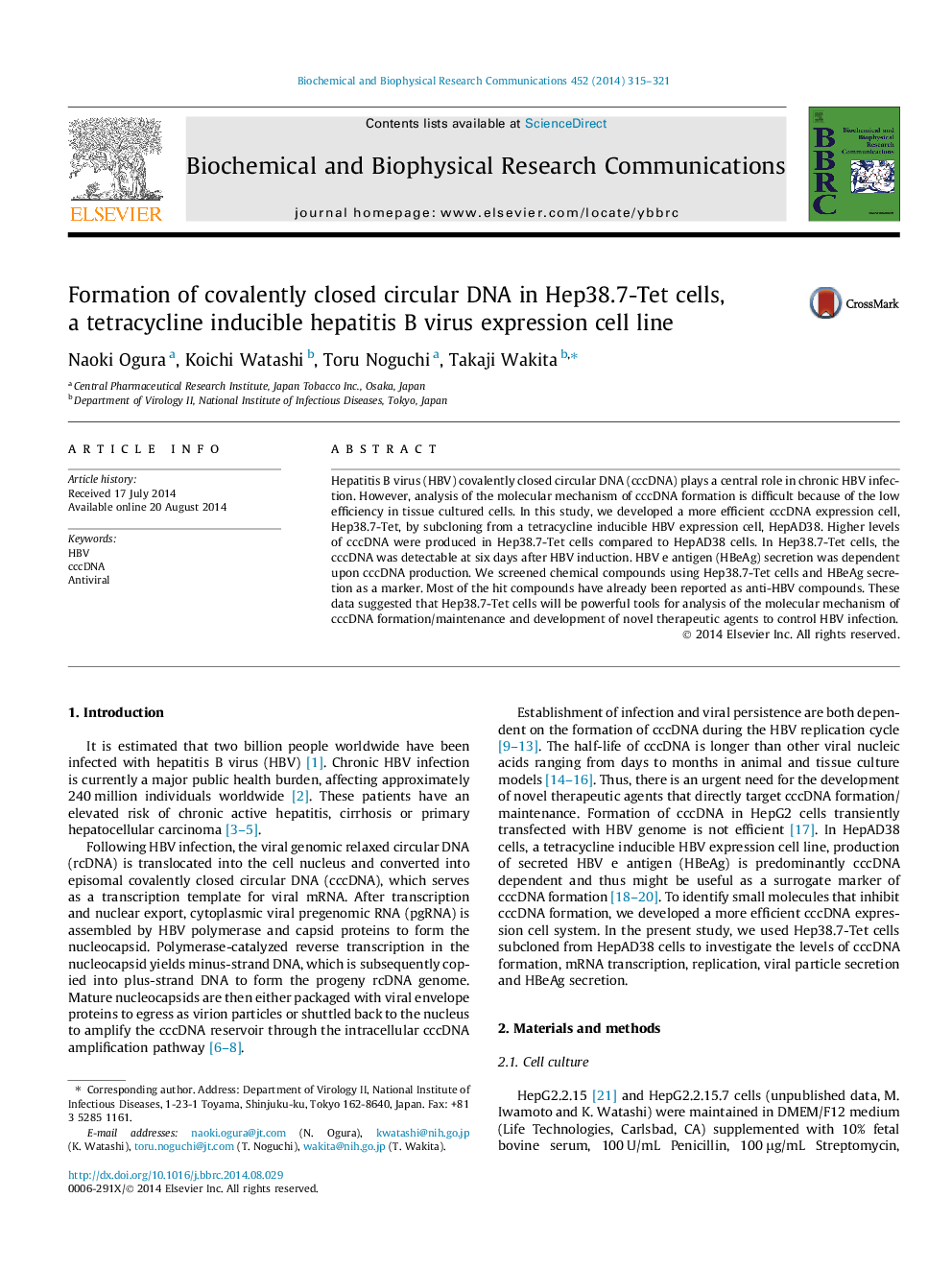| Article ID | Journal | Published Year | Pages | File Type |
|---|---|---|---|---|
| 10753749 | Biochemical and Biophysical Research Communications | 2014 | 7 Pages |
Abstract
Hepatitis B virus (HBV) covalently closed circular DNA (cccDNA) plays a central role in chronic HBV infection. However, analysis of the molecular mechanism of cccDNA formation is difficult because of the low efficiency in tissue cultured cells. In this study, we developed a more efficient cccDNA expression cell, Hep38.7-Tet, by subcloning from a tetracycline inducible HBV expression cell, HepAD38. Higher levels of cccDNA were produced in Hep38.7-Tet cells compared to HepAD38 cells. In Hep38.7-Tet cells, the cccDNA was detectable at six days after HBV induction. HBV e antigen (HBeAg) secretion was dependent upon cccDNA production. We screened chemical compounds using Hep38.7-Tet cells and HBeAg secretion as a marker. Most of the hit compounds have already been reported as anti-HBV compounds. These data suggested that Hep38.7-Tet cells will be powerful tools for analysis of the molecular mechanism of cccDNA formation/maintenance and development of novel therapeutic agents to control HBV infection.
Related Topics
Life Sciences
Biochemistry, Genetics and Molecular Biology
Biochemistry
Authors
Naoki Ogura, Koichi Watashi, Toru Noguchi, Takaji Wakita,
